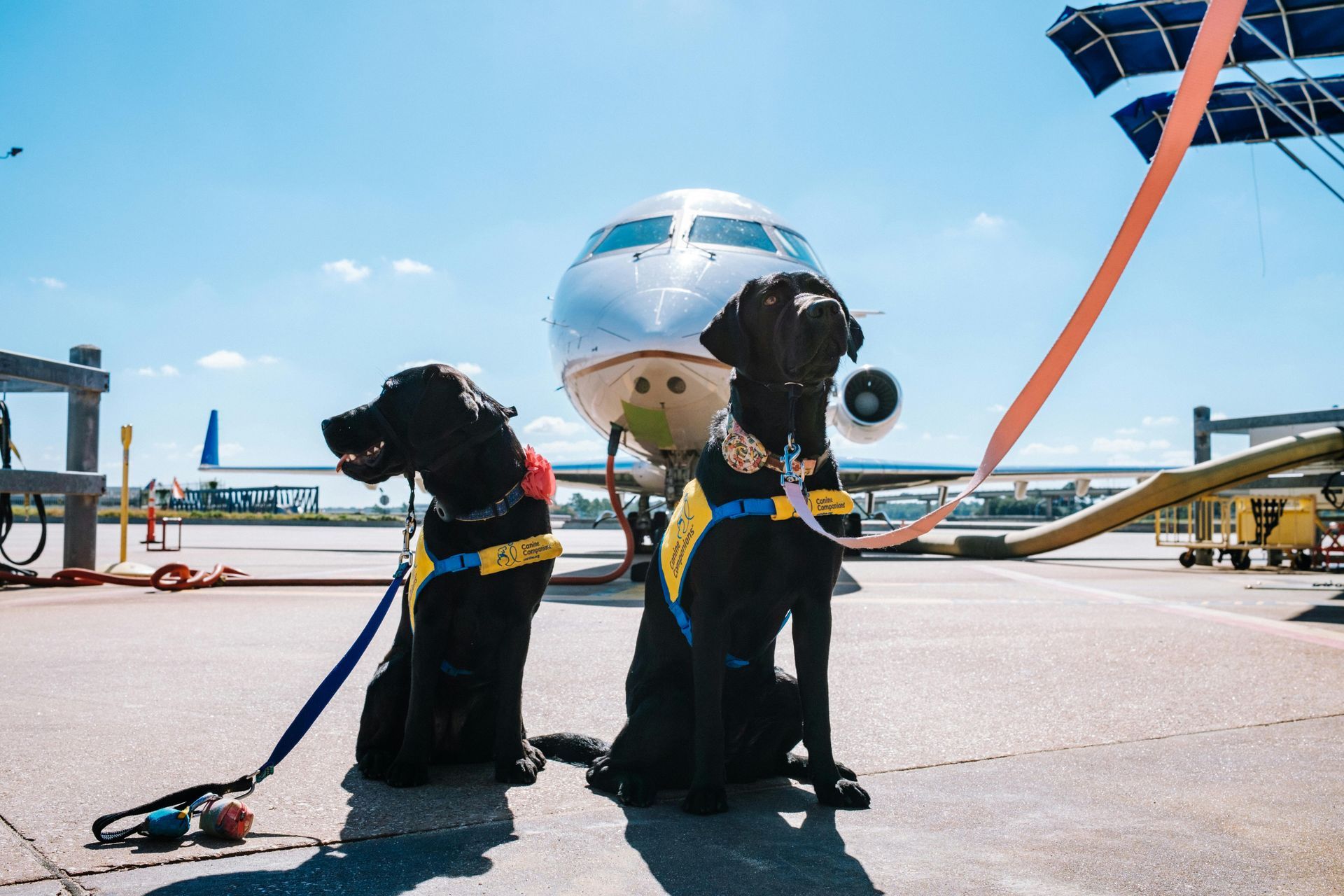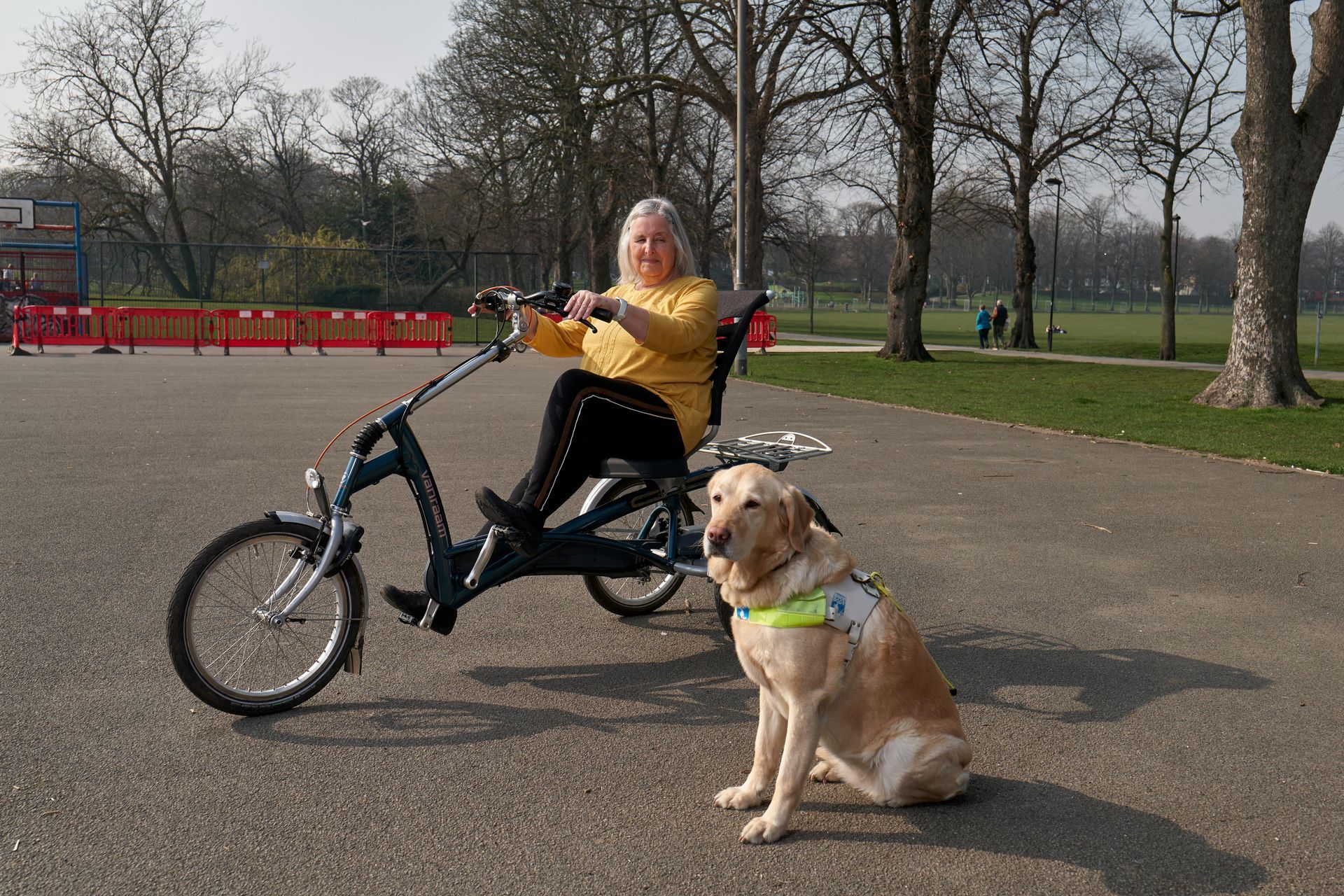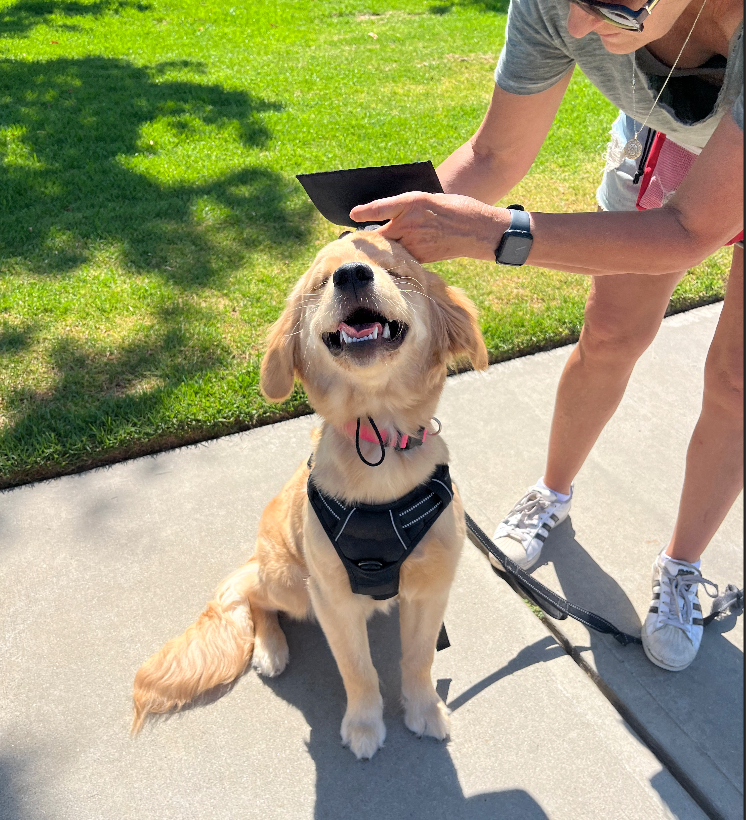How Service Dogs Help People with All Disabilities: Tasks and Benefits Explained
Service dogs are not just pets—they are life-changing companions who provide essential support for people with various disabilities. Whether you’re living with a physical, mental, or medical condition, service dogs are specially trained to assist with everyday tasks that make life more manageable and independent. In this post, we’ll explore how service dogs help people with all types of disabilities, and the tasks they are trained to perform to provide support.
What Is a Service Dog?
According to the Americans with Disabilities Act (ADA), a service dog is any dog that is individually trained to do work or perform tasks for a person with a disability. These dogs are not pets; they are working animals that provide valuable assistance to those in need.
Service dogs can assist people with a wide range of disabilities, from mobility impairments and sensory disabilities to psychiatric conditions like anxiety, PTSD, and depression. The tasks they are trained to perform vary depending on the specific needs of the individual, but their impact on improving quality of life is undeniable.
How Service Dogs Help People with Physical Disabilities
Service dogs are perhaps most commonly associated with physical disabilities. People with mobility impairments, including those who use wheelchairs or walkers, often rely on service dogs to help them navigate daily life more easily.
Some of the key tasks service dogs perform for people with physical disabilities include:
- Guiding and Navigating: For individuals who are blind or have low vision, service dogs are trained to guide them through obstacles, helping them get around safely. These dogs help their handlers navigate sidewalks, cross streets, and avoid obstacles in their path.
- Mobility Assistance: Service dogs can help individuals with limited mobility by retrieving dropped items, opening doors, turning on lights, and even pulling wheelchairs. They provide balance support, making it easier for people with walking difficulties to move around.
- Physical Support: Some service dogs are trained to provide physical assistance for people who need help with balance. They may offer their body as support while walking or help pull a wheelchair or walking aid.
How Service Dogs Help People with Psychiatric Disabilities
Service dogs are incredibly beneficial for individuals with psychiatric disabilities such as PTSD (post-traumatic stress disorder), anxiety, depression, and autism. These dogs are trained to assist with emotional regulation, safety, and provide therapeutic interventions during episodes of distress.
Some of the tasks that service dogs perform for people with psychiatric disabilities include:
- Alerting to Anxiety or Panic Attacks: Dogs trained to detect signs of anxiety or panic attacks can provide early warnings and help calm their handler by providing comforting physical contact or a distraction from the situation.
- Creating a Physical Buffer: Service dogs can create space in public or crowded areas, which is especially helpful for individuals with social anxiety or those who may experience feelings of overwhelm or discomfort in busy environments. By positioning themselves between their handler and others, service dogs offer a sense of safety and security.
- Deep Pressure Therapy: For individuals with anxiety, depression, or PTSD, some service dogs are trained to apply deep pressure therapy. This involves the dog placing its body on the handler’s lap or chest, which can help alleviate symptoms of distress by providing calming physical pressure.
- Interrupting Harmful Behaviors: Dogs can also be trained to interrupt harmful behaviors, such as self-harm or excessive repetitive actions, by nudging their handler or by performing specific tasks that distract or redirect the individual.
How Service Dogs Help with Medical Conditions
Service dogs provide crucial support for people living with a variety of medical conditions, such as diabetes, epilepsy, and heart disease. They are trained to alert their handlers to changes in their condition, allowing for early intervention and preventing emergencies.
Some of the tasks service dogs perform for individuals with medical conditions include:
- Seizure Alerts: Some service dogs are trained to sense an oncoming seizure, giving their handler an opportunity to prepare or seek assistance. They can also provide physical support during a seizure, helping to ensure the safety of the individual.
- Diabetes Alerts: Service dogs trained for diabetes alerting can detect changes in blood sugar levels, alerting the handler to low or high blood sugar levels before they become dangerous. This early warning allows the individual to take corrective actions, such as eating or administering insulin.
- Heart Problem Alerts: Some service dogs are trained to detect changes in heart rate or other signs of cardiovascular distress. They can alert the handler if their heart rate spikes or drops, which is especially important for individuals with heart conditions that require constant monitoring.
Service Dogs for Autism and Intellectual Disabilities
Service dogs are also invaluable for individuals with autism, Down syndrome, and other developmental disabilities. These dogs are trained to provide stability, safety, and companionship, helping to navigate everyday challenges.
For individuals with autism, service dogs can assist with:
- Reducing Anxiety: Many children with autism struggle with anxiety, and service dogs offer comfort and support by helping to reduce stress during challenging situations, such as transitions or public outings.
- Interrupting Repetitive Behaviors: Service dogs can help interrupt repetitive behaviors common in autism, such as hand-flapping or spinning, by offering a positive alternative behavior.
- Safety and Boundaries: Service dogs are often trained to help children with autism stay within safe boundaries, preventing them from wandering away or becoming lost.
Multi-Purpose Service Dogs: Assisting with Multiple Disabilities
One of the most powerful benefits of service dogs is their ability to assist with multiple disabilities. These multi-purpose service dogs are trained to help individuals with a combination of physical, psychiatric, and medical conditions, making them versatile and incredibly valuable.
For instance, a multi-purpose service dog could help someone with Postural Orthostatic Tachycardia Syndrome (POTS) by providing physical stability and balance, while also alerting to changes in blood pressure or other symptoms. They might also assist someone with Ehlers-Danlos Syndrome (EDS) by retrieving items or providing pressure therapy during flare-ups.
The Tasks Service Dogs Are Trained to Do
No two service dogs are the same, and the tasks they perform are tailored to the individual needs of their handler. Below are just a few examples of the tasks that service dogs can be trained to do:
- Retrieving Items: Service dogs can retrieve items such as keys, phones, or medication, making it easier for people with physical disabilities or medical conditions to manage their environment.
- Opening and Closing Doors: Dogs can be trained to open and close doors, cabinets, and even turn lights on and off to help with daily tasks.
- Providing Stability: For individuals with balance issues, service dogs can offer physical support when walking, turning, or standing.
How Service Dogs Can Change Your Life
Service dogs make a profound impact on the lives of people with disabilities. By performing essential tasks, these dogs enable individuals to live more independently, safely, and confidently. They provide companionship, security, and a sense of freedom that would otherwise be difficult to achieve.
If you’re considering getting a service dog, remember that it’s important to choose a dog that is a good fit for your specific needs. A service dog is an invaluable partner that can transform your life, and finding the right one is the first step toward a more independent and fulfilling future.











